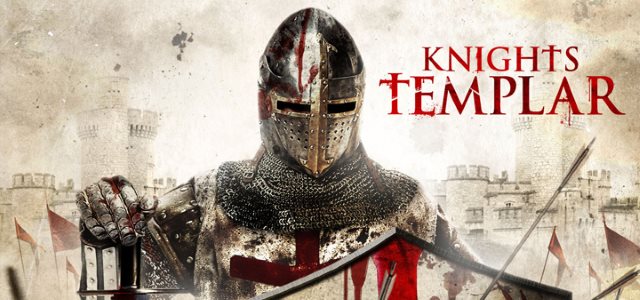Whenever someone mentions Templars or Masons, there is always some veil of mystery around them. There is much misleading information about them. Urban myths are retold, gossips, and irrational fears are everywhere. Who are Templars and Masons? Are they the same or just somehow connected? What do we know about them? Are they real rulers of the world? Let us see historical facts.
First of all, Medieval Knights Templar and Knights Templars as Masonic Order are not the same. History of the Medieval Templars is connected to the history of the Crusades. The First Crusade was launched on 27 November 1095 by Pope Urban II, and its goal was freeing Jerusalem and Eastern Christians from the Muslim rule. During that war, many knights and peasants came from the West, and they managed to capture Jerusalem in 1099. Conquesting of Jerusalem was followed by the massacre of Muslim and Jewish inhabitants, and crusader states were established. Before Knights Templar, there were Hospitallers, an order that was founded after the First Crusade. Their role was helping sick pilgrims who came to Jerusalem, and later they became an armed escort, and over time, they grew into a substantial force. Massacres provoked revenge of the Muslims, and Christian pilgrims were also an excellent opportunity for thieves. It soon became clear that another order than Hospitallers is needed.
It is assumed that Templars were created after an incident in 1119. A group of pilgrims was attacked on the road between Jerusalem and the Jordan Valley (Burgtorf, 2008). Hugh of Payns and some other knights went to the Latin patriarch of Jerusalem and vowed to live permanently like regular canons in celibacy, obedience, and poverty and made it their goal to protect the pilgrims on their way throughout the Holy Land. The king in Jerusalem allowed them to use parts of the al-Aqsa Mosque as living quarters. Al-Aqsa Mosque is near the Templum Domini, shrine on the Temple Mount in Jerusalem. The proximity of their living quarters to the Templum Domini gave these knights name – Templars (Burgtorf, 2008). This new order attracted influential supporters and king. The patriarch and various individuals supplied it with a number of benefices sufficient to feed and clothe its members. The rise of the order was successful, probably due to these influential friends (Upton-Ward, 1999). The Council of Troyes in 1129 recognized Templars as a new order protected by Pope, and after that, the order grew rapidly in membership and power.
Towards the end of the 1130s, the Templars got their hierarchical structure, thanks largely to Hugues de Payens’ successor as Grand Master, Robert de Craon, who was also known as Robert the Burgundian. He was a great administrator, and he wanted to get support from the Pope, and he also wanted to free Templars from the local ecclesiastical authorities. He managed to get the support of the pope Innocent II, who created a new category of chaplain brothers for the Templars. The chaplain brothers had special privileges. They had the best robes and wore leather gloves (the only other brothers permitted to wear gloves as hand protection were the masons when they were working) ((Upton-Ward, 1999). Chaplain brothers were full members of the Templars, and their role was hearing of confessions and absolving the other Templars from the sin.
The Templars were monks and soldiers at the same time, and they were very successful in combats for the discipline of monastic life that was applied to the battlefield. They were shock troops in the key battles of the Crusades, because they were heavily armored, with heavily armored horses, skillful warriors with iron discipline. The Templars were not just soldiers. Although they were sworn to individual poverty, their order had prominent wealth from donations in money and land. They accumulated wealth throughout Christendom, and thanks to that, they created some sort of early banks and system for using cheques. The usage of cheques has improved the safety of pilgrims because they had no cash, and they became less attractive targets for thieves.
Over time, Muslims became stronger in the East with Saladin as their leader. In 1187. Templars lost many members at the battle of Hattin, and soon Saladin reconquered Jerusalem. Templars lost their headquarters and went to Acre, which soon became the new capital of the Christian state after al-Ashraf conquered Acre in 1291. Templars moved to Cyprus and spread all over Europe (Burgtorf, 2008). Although they were expelled from the East, Templars have kept power, privileges, and wealth.
King Philip IV of France saw the opportunity to free himself from debts he made during the war with England and ordered French Templars to be simultaneously arrested. Templars were accused of heresy, worshipping of idols, homosexuality, financial corruption, fraud, and secrecy. They were tortured during the investigation, and many of them confessed under pressure. Some of them were burned at the stake while others managed to escape. Philip IV confiscated their wealth, and Templars were persecuted and elsewhere over Europe. Soon the Templars ceased to exist.
“The Knights Templars” is also named for the masonic lodge (their full name is “The United Religious, Military and Masonic Orders of the Temple and St John of Jerusalem, Palestine, Rhodes, and Malta”). This is a specific masonic society that requires not only faith in a Supreme Being, and members must also be Christians. Masons generally disclaim that their lodge has anything to do with medieval Templars except the name. Still, some Masons, non-Masons, and even anti-Masons insist that there is some connection. Some others suggest that the historical connection between these groups is a pure myth (Woodford, 1878). According to legend, some Templars fled to Scotland and England and joined Freemasons there, but the fact is that there was no news about Templars over 500 years until myth was created. Their destiny in England after persecution is good known: they were sent to the monasteries in the north or had some sort of pension, which gave them Knights Hospitallers. Templars spontaneously vanished from the historical scene after persecution, while masonic order with the same name was created about 1770. (Woodford, 1878).
Bibliography:
Burgtorf J, The Central Convent of Hospitallers and Templars, History, Organization and Personnel (1099/1120-1310), Brill, Leiden 2008.
Woodford A, Kenning’s Masonic Cyclopaedia, Handbook of Masonic Archaeology, History and Biography, George Kenning, London 1878.
Upton-Ward J. M., The Rule of the Templars: The French Text of the Rule of the Order of the Knights Templar Studies in the History of Medieval Religion, The Boydell Press, Suffolk 1999.
https://en.wikipedia.org/wiki/Knights_Templar#Rise
https://en.wikipedia.org/wiki/Knights_Hospitaller#Foundation_and_early_history











